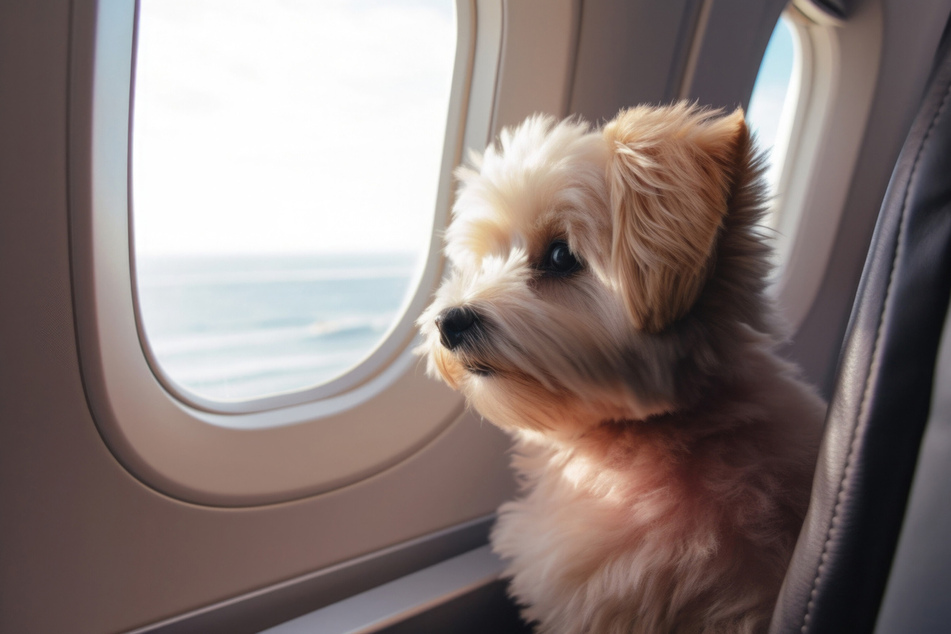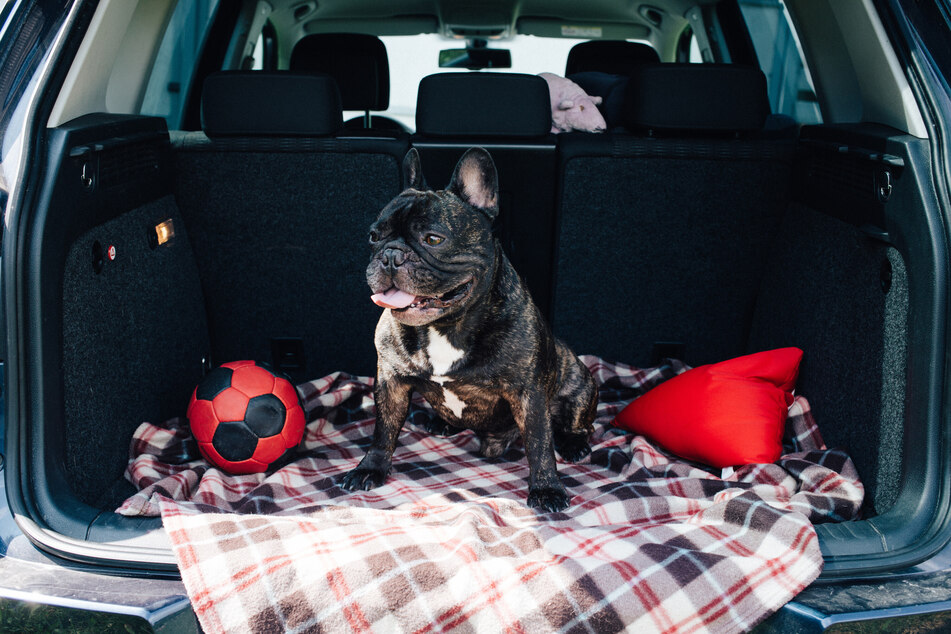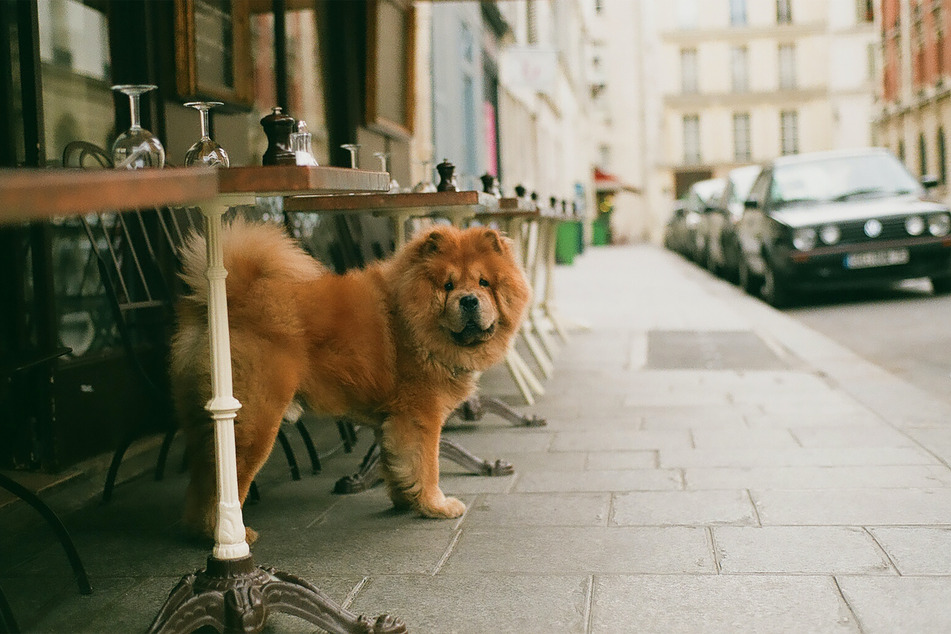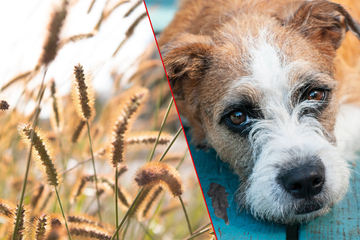How to travel with a dog: Tips for going in a car or airplane with dogs
It's not impossible to travel on an airplane, in a car, or overseas with your dog, but it does present its own set of challenges. How do you travel with a dog? How do you make it comfortable and relaxing? Let's take a look.

Are you packed and ready to go, but feeling nervous about taking your dog with you on a holiday? It's fair enough, your dog doesn't know what an airplane is, and isn't used to visiting strange, exciting, and overwhelming places. While difficult at times, traveling with your dog can be a rewarding and bonding experience, and is well worth the hassle. So, how do you do it?
In this dog guide, TAG24 will take a look at how to travel with a dog. With these tips and tricks, you'll be traveling with your dog in the car or on an airplane without a care in the world. Don't stress – it's going to be great!
How to travel with a dog by plane
Air travel can be an exhausting and scary experience for any dog, and for obvious reasons: It's loud, stuffy, and uncomfortable on the plane, and it's frantic and busy in the airport. As a result, most people avoid taking their dogs with them when they go overseas or fly across the country.
They shouldn't fear too much, though, because air travel is perfectly possible with a dog, and not something that should be avoided simply because it's difficult. You can have plenty of wonderful experiences with your doggo if you allow yourself to take it on an airplane – you just need to know how to do it!
So here are a few tips for taking your dog on a plane:
- Make a decision early about whether your dog can go in the cabin with you, or whether it needs to go in the cargo hold. This way you can prepare it in advance.
- Find out whether you can take your own carrier on the flight with you, or if you need to use one provided by the airline.
- Make sure that your dog is strong, healthy, and brave. You will probably need to provide documentation of this anyway.
- It's extremely important to check any rules that there may be around taking a dog (or any animal) to your destination. Many countries, and some US states, have restrictions that need to be followed.
- Speak with your airline directly and get all the necessary advice and information that you can find. Check with your vet and get advice from them too.
- If your dog seems uncomfortable or is very anxious about the experience, avoid it in the future.
- Make sure that your dog's container is clearly labeled "live animal" and that the correct way up is also indicated so that there are no mistakes made when loading it into the cargo hold.
Remember that what you are going to do will certainly induce at least a small amount of stress. If your dog won't be up to that difficulty, it should be let off the hook and left behind at a kennel.

Flying with a large dog
Large dogs will need to go into the cargo hold, as they cannot fit under the seat in front of you. As a result, they will need to be checked in along with your luggage. Different airlines have different rules, though, so as always it is best to check these rules before you go to the airport, and make sure that you are fully prepared.
There are a few guidelines that will need to be followed when your large dog is flying in the cargo hold:
- The box it is in must be well-ventilated and hard, with padding provided within for the dog's comfort. Squishy carriers are not acceptable.
- It must be properly labeled with the correct side up, "live animal" indicated, and preferably something making it clear that a dog is inside.
- Different boxes will be allowed on different airlines and for different routes. As such, always check with the airline beforehand.
- Bookings must be made well in advance of departure to guarantee your pet space in the hold.
- Check how feeding works at your airline, many will require you to provide two meals which to be provided by staff.
Your darling doggo will be kept in a pressurized section of the hold, and will be kept at a reasonable temperature. There's nothing to worry about, the airline has a duty of care, but keep in mind that this doesn't mean it'll be pleasant for your dog.
How to fly with a dog in the cabin
Flying with a dog in the cabin is a more comfortable way to travel with your dog, both for you as the owner and for your perfect pooch. That doesn't mean it's easy, though, as there are a variety of things that will need to be organized beforehand. It's our job to walk you through those things.
Here's what you need to consider before allowing your dog to fly in the cabin:
- Your dog usually needs to be kept in a carrier that fits beneath the seat in front of you. This space will vary in size depending on the airline and aircraft, so you need to check before embarking.
- Each carrier can only contain one dog and that dog needs to be able to stand up and turn around within it.
- You need to bring all the essential items with you in your carry on. These items include, but are not limited to:
- Blankets and pillows
- Leash
- Water bowl (and water)
- Treats and food
- Litter tray
- Plastic bags (for litter tray)
- Toys and comfort items
- You will need to check in your pet before embarking on your journey, and there will be a variety of required paperwork.
- On most airlines, your dog will be required to stay in its carrier for the entire flight.
If you are traveling long distances, it's maybe a good idea to check for dog relief areas at the connecting airport, or take a look at whether leash walking is permitted.
Some of these rules may seem harsh, but it's important that your dog is kept safe and at least relatively comfortable throughout this ordeal.
Can my dog sit on my lap during a flight?
The only dogs that are allowed out of their carriers during flight are therapy or assistance dogs. These careful canines have been specifically trained for these situations, so there is a guarantee that they will be calm, respectful, mellow, and well-behaved throughout the flight. As a result, no, your dog cannot sit on your lap during a flight.
How much does it cost to travel with a dog on an airplane?
It will generally cost around $100-200 to fly with your pet on an airplane and will cost between $150-250 to have it looked after in the cargo hold. Of course, every airline will have its own price and that price will likely vary on the class in which you are flying as well. These different price points may or may not include various services and amenities.
How to get a dog on a plane for free
The only way to genuinely take a dog on a plane for free would be if it is a medically prescribed emotional or physical support animal. If it is a therapy dog, a dog that is helping you because you are visually or physically impaired, or serves some other support function, then you may be allowed to take it onboard provided that you have an official letter from your doctor.
How to travel with a dog in the car

If you want to travel the country with your doggo, the best option you have is obviously in the car. It is the easiest and most straight forward, but not necessarily as safe as you'd think. Of course, car crashes can happen whether you have a dog in the car or not, so it's best to be prepared.
Here are four safe and easy tips for transporting your dog in the car:
- Make sure that your dog is wearing a well-fitted harness, and that this harness is fixed to the seat belt. They should be able to sit and move around a little bit, but the seat belt should function as intended.
- There should be some form of a partition between the back seat (where your dog is) and the front seat, to avoid the dog jumping onto the driver.
- If necessary, larger dogs should be put in the trunk of the car – assuming that the trunk is open to the rest of the car (so not a sealed boot). Make sure it is secured to the back seat, however, and that there is still a partition.
- If it is a bit more difficult or complicated, there are plenty of transport boxes available for purchase that serve all of the above listed purposes.
When traveling with a dog in the car, you need to make sure that you take a break every two hours or so to walk the dog, let it drink water, and allow it to stretch its legs and get a bit of exercise.
Traveling with dogs in the car for a long distance
When traveling particularly long distances, the rules are more-or-less the same, but those breaks become even more important. You should make sure they are more frequent and that you are driving less per day than you otherwise would. In other words, split up journeys that are more than 12 hours long and do them over several days so that your dog gets several long breaks.

How to travel with a dog internationally
The most important thing to do when traveling with any pet internationally is to always check the local entry requirements. The European Union, for example, requires all incoming dogs to have been chipped and fully vaccinated with a proper pet passport. However, even within the Union, different countries have various different rules to be followed.
Other countries, such as Australia, will require any dog or cat to be quarantined and observed for a set amount of time when entering the country. Such places are generally not advisable as travel destinations if you want to take your perfect pooch with you. Failure to follow entry regulations will often result in harsh punishments, so it's best to read up thoroughly before departing.
You're probably going to need to take your dog on a plane if you are traveling internationally, so be prepared for that. The name of the game is to make sure that you are well-prepared and have done all the necessary paperwork. If you have, your overseas holiday should go smoothly!
How much does it cost to fly a dog internationally?
The cost of flying a dog internationally entirely depends on the airline and where your dog is flying. Dogs that are taken into the cabin will cost less, and dogs that are put in the cargo hold of the airplane will cost more, but it'll all cost an arm and a leg. Be aware of these costs, be aware of the various rules, and make sure that you are well-prepared for the journey ahead.
So, should you travel with your dog?
You should always try to travel with your dog where possible. It is an incredibly rewarding and positive experience, and while challenging, will improve and intensify the relationship between you and your beloved doggo. You should recognize when it's not possible, though, and respond in kind – if your dog is enormous and you are traveling many, many hours, it might not be a good idea.
Everything is better in moderation. Don't despair and default to putting your dog in a Kennel whenever you go on a road trip with the family, but also don't be trying to get on a 20-hour flight to Australia with a 150-pound doggo. Common sense is the name of the game!
Cover photo: Unsplash/Josh Rakower




